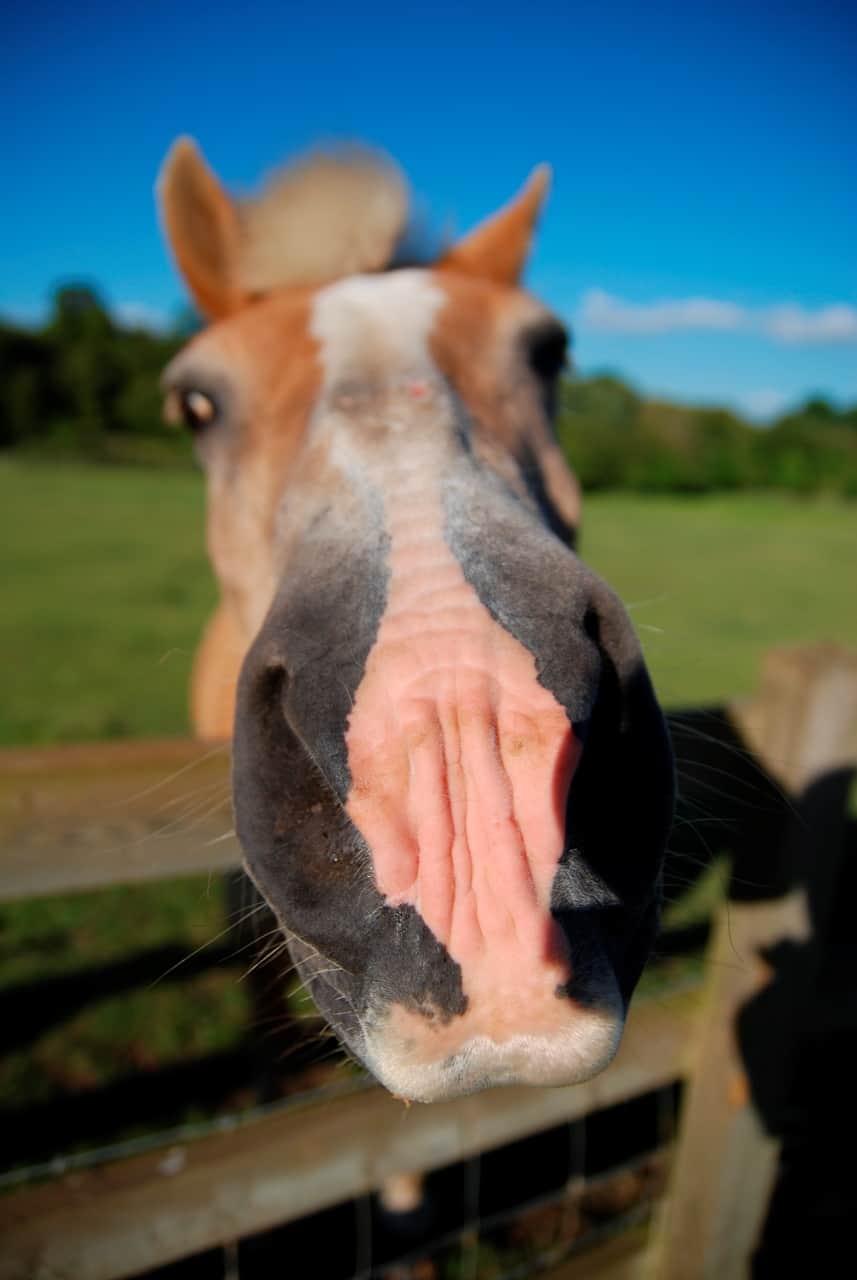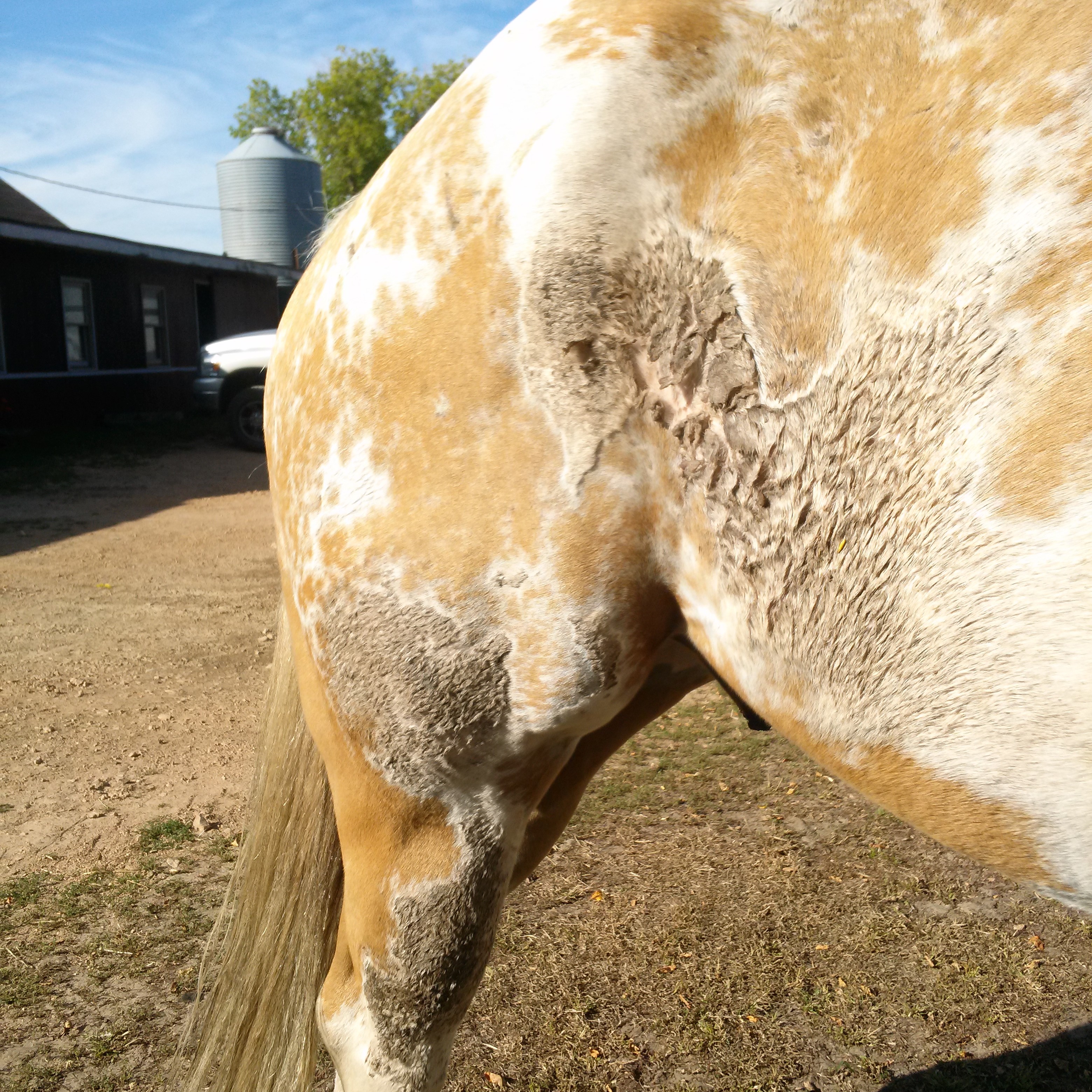Sunburn or photosensitivity in horses is a condition that can be caused by excessive exposure to the sun’s ultraviolet (UV) rays, leading to skin damage.

Credit: thehorse.com
Understanding Sunburn And Photosensitivity
When it comes to the health of our equine companions, it’s essential to be aware of conditions that can affect their well-being, such as sunburn and photosensitivity. These two conditions may sound similar, but they have distinct differences. Let’s explore what sunburn and photosensitivity are and how they differ.
What Is Sunburn In Horses?
Sunburn in horses occurs when their skin gets damaged due to overexposure to the sun’s harmful ultraviolet (UV) rays. It’s similar to how our skin burns when we spend too much time in the sun. Horses with light-colored hair, such as white or gray, are particularly susceptible to sunburn because their skin lacks the pigmentation that helps protect against UV rays.
Sunburn can be extremely uncomfortable and painful for our equine friends, leading to redness, peeling skin, and even blistering. Additionally, repeated sunburn can increase the risk of developing skin cancer. Therefore, it’s crucial to take measures to protect horses from prolonged sun exposure and prevent sunburn.
What Is Photosensitivity?
Photosensitivity, on the other hand, is a condition in horses that causes an abnormal reaction to sunlight. It can be categorized into two types: primary and secondary. Primary photosensitivity occurs when a horse’s liver fails to filter out certain substances that become activated by sunlight, leading to skin damage. Secondary photosensitivity, on the other hand, is caused by ingestion of certain plants or medications that can make the horse more sensitive to sunlight.
Horses with photosensitivity display symptoms such as redness, crusting, and swelling of the skin, as well as itchiness. In severe cases, painful sores can develop, leading to discomfort for the horse. To manage photosensitivity, it’s important to identify and remove any known triggers and provide shade or proper protective gear to minimize the horse’s exposure to sunlight.
Differences Between Sunburn And Photosensitivity
To summarize the differences between sunburn and photosensitivity:
| Sunburn | Photosensitivity |
| Caused by direct exposure to UV rays | Caused by abnormal reaction to sunlight due to liver dysfunction (primary) or ingestion of certain substances (secondary) |
| Affects horses with light-colored hair more | Can affect horses of any hair color |
| Leads to sunburned skin, redness, peeling, and blistering | Results in redness, crusting, swelling, and itchiness of the skin |
| Can increase the risk of skin cancer | Sores may develop in severe cases |
:strip_icc()/GettyImages-177674651-591b741a3df78cf5fa6c2381.jpg)
Credit: www.thesprucepets.com
Causes And Risk Factors
Sunburn and photosensitivity are common issues that can affect horses, causing discomfort and potentially leading to more serious health problems. Understanding the causes and risk factors associated with these conditions is essential for preventing and managing them effectively.
Common Causes Of Sunburn And Photosensitivity In Horses
Sunburn in horses is primarily caused by prolonged exposure to the sun’s ultraviolet (UV) rays. Horses with light-colored coats, pink skin, and thin hair are more susceptible to sunburn. Additionally, horses with white markings, such as blazes and socks, are also at a higher risk of sunburn due to their lack of pigment that offers protection against UV rays. It’s important to note that sunburn can occur not only on exposed areas but also on areas covered by hair, such as the belly or inner thighs.
Photosensitivity, on the other hand, can be caused by various factors, including:
- Consumption of certain plants that contain photosensitizing agents, such as St. John’s Wort or buckwheat
- Ingestion of medications or supplements that make the horse more sensitive to sunlight
- Exposure to certain chemicals, such as those found in fly sprays or grooming products
It’s crucial to identify the specific cause of photosensitivity in order to prevent further exposure and provide appropriate treatment for the horse.
Environmental Risk Factors
The environment plays a significant role in both sunburn and photosensitivity. Horses kept in areas with intense sunlight and high UV index, such as regions closer to the equator or during the summer months, are at a greater risk of sunburn. Similarly, horses kept in pastures with access to toxic plants known to cause photosensitivity are more likely to develop this condition. Providing adequate shade and limiting exposure to sunlight can help mitigate the risks associated with these environmental factors.
Genetic Risk Factors
Horse breeds with lighter coat colors, such as palominos, grays, or paints, are inherently more prone to sunburn. This is due to their reduced ability to produce melanin, the pigment responsible for protecting the skin from UV rays. Additionally, certain genetic conditions, such as pink eye, can increase a horse’s susceptibility to sunburn and photosensitivity. Owners and caretakers should be aware of these genetic risk factors and take appropriate precautions to prevent sunburn and photosensitivity in susceptible horses.
Prevention And Treatment
Prevent and treat sunburn or photosensitivity in horses with proper shade, sunscreen, and protective clothing. Regular monitoring and early intervention can help minimize discomfort and long-term damage.
Protective Measures For Preventing Sunburn And Photosensitivity
To protect your horse from sunburn and photosensitivity, it’s essential to take proactive measures. Providing adequate shade is crucial. Ensure that your horse has access to a shaded area, either by using natural shade from trees or by providing a shelter or a proper turnout blanket. If natural shade is not available in the pasture, consider erecting a temporary structure like a shade cloth or a sunshade. It’s also vital to limit sun exposure during peak UV hours (10 am to 4 pm). Keeping your horse in a stable or shaded area during this time will significantly reduce the risk of sunburn and photosensitivity. For horses with pink skin or white hair, applying sunscreen can be beneficial. Use a horse-specific sunscreen with a high sun protection factor (SPF) and apply it to vulnerable areas such as the nose, ears, and around the eyes. Reapply the sunscreen regularly, especially after sweating or swimming, to maintain adequate protection. Wearing a fly mask that provides UV protection is another effective measure. Fly masks with UV protection not only shield the horse’s eyes from harmful UV rays but also offer added protection to the face and ears.Appropriate Management Practices
Besides protective measures, proper management practices are essential in preventing sunburn and photosensitivity in horses. Here are some key practices to consider:- Ensure your horse has access to a balanced diet that includes essential vitamins and minerals. Proper nutrition can help improve the overall health and condition of the skin, making it more resilient to sun damage.
- Regular grooming can play a significant role in preventing sunburn. Remove dirt, sweat, and debris from your horse’s coat to minimize the risk of skin irritation and sunburn. Grooming also helps in early detection of any changes or signs of damage.
- Keep your horse well-hydrated. Adequate hydration contributes to skin health and can help mitigate the effects of photosensitivity.
- Monitor your horse’s turnout schedule. Adjust turnout times to avoid the peak hours of intense sunlight. Consider turning out at night or during early morning hours when the UV exposure is significantly reduced.
Treatment Options For Sunburn And Photosensitivity
If your horse does experience sunburn or photosensitivity, prompt treatment is essential to alleviate discomfort and prevent further damage. Here are treatment options to consider:- Cool water compresses can provide temporary relief and help reduce inflammation associated with sunburn. Gently apply cold water-soaked towels or use a hose to cool the affected areas.
- Topical ointments specifically formulated for sunburn can be applied to soothe and moisturize the affected skin. Look for products containing aloe vera or natural moisturizers to aid in healing and provide relief.
- Consulting with your veterinarian is crucial if your horse develops severe sunburn or shows signs of photosensitivity. They may recommend medications or treatment options based on the severity and underlying cause.
- During the recovery period, continue to provide shade and minimize sun exposure until the skin has fully healed. This will give the affected areas sufficient time to regenerate and reduce the risk of further damage or complications.

Credit: www.weitzequine.com
Frequently Asked Questions Of Sunburn Or Photosensitivity In Horses
What Are The Clinical Signs Of Photosensitivity In Horses?
Photosensitivity in horses is characterized by clinical signs such as red and swollen skin, blistering, scabs, and sensitivity to sunlight. These symptoms manifest due to abnormal reactions to ultraviolet light, commonly caused by certain plants, medications, or liver disorders. Seek veterinary care for diagnosis and treatment.
What Is The Difference Between Sunburn And Photosensitivity?
Sunburn is caused by overexposure to the sun’s harmful UV rays, resulting in red, painful skin. Photosensitivity, however, is a condition that makes the skin overly sensitive to sunlight or artificial light, leading to rashes, itching, and irritation.
How Do You Treat A Photosensitive Horse?
To treat a photosensitive horse, provide shade during peak sunlight, use fly sheets or masks to protect the skin, and limit turnout during the sunniest parts of the day. Consult a vet for medications or supplements that may help manage the condition.
What Does Sunburn Look Like On A Horse?
Sunburn on a horse appears as red or pink skin, blisters, and peeling. It can cause discomfort, pain, and sensitivity to touch. Applying sunscreen, providing shade, and limiting sun exposure help prevent sunburn on horses.
Conclusion
Inadequate sun protection for horses can lead to sunburn or photosensitivity, causing discomfort and potential health issues. Understanding the causes and symptoms of these conditions is crucial for horse owners to provide proper care and prevent unnecessary suffering. By implementing sun protection measures and seeking prompt veterinary assistance when necessary, horse owners can ensure their equine companions stay healthy and comfortable under the sun.
Protecting our horses from the harmful effects of sunburn and photosensitivity is essential for their overall well-being.


